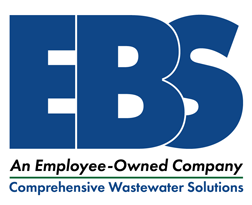EBS believes that monitoring the microbiology (biomass) of your activated sludge system or aerated stabilization basin (ASB) is just as critical as any other test such as pH, nutrients, total suspended solids (TSS), or chemical oxygen demand (COD). Often, the bacteria will show symptoms of stress or toxicity days before the actual performance of BOD or TSS removal deteriorates. However, because microscopic evaluation can be somewhat subjective and site-specific, many plants have chosen to perform this analysis sporadically, if at all. Alternatively, they may send samples to an outside consultant, such as EBS, with some frequency.
EBS recommends to our clients that they perform the microscopic analysis on-site to make the analyses real-time and more meaningful in order to anticipate and troubleshoot system problems.
Tips for microscopic analysis.
1. Get a decent microscope. You don’t have to have a $10,000 research-grade microscope, but we highly recommend getting a decent phase contrast scope. You will pay US$4000 – $5000 for a reasonable Nikon or Olympus setup. EBS has purchased a couple of lower-end phase scopes new on eBay with good success, but be aware that the picture and description can be deceptive.
2. Clean microscope annually. Take care of your new phase-contrast microscope by getting it cleaned by a professional on an annual basis. Accumulated dust in a microscope can deteriorate image quality. Always keep your microscope protected with a cover.
3. Perform routine examinations of your biomass on a regular basis. For activated sludge, we recommend a daily examination. For an aerated stabilization basin, the key is to develop a good baseline of examinations over time by analyzing a few times per week. Then you can perform additional examinations during upset conditions.
4. Standardize your microscopic examination procedures as much as possible. At EBS, we utilize a concept called the Maturity Index as one of the ways to quantify the biomass’ condition. The Maturity Index is a weighted average of the distribution of the higher life forms based on the point value system.
Flagellates and Amoebae = 1
Free swimming and crawling ciliates = 2
Stalked ciliates and Suctoria = 3
Rotifers = 4
Nematodes = 5
The total numerical value obtained during the ten views of a slide is then divided by the total number of microscopic organisms viewed to obtain a numerical value for the maturity of your plant. The Maturity Index number eliminates the subjectivity found between operators. This number is then utilized over a longer period of time to monitor changes and can be evaluated against process conditions.
5. Be familiar with what’s normal. Each person who performs the Microscopic Evaluation should also be familiar with the “normal” appearance of floc and filamentous bacteria. Filamentous Bacteria identification by plant personnel is not necessary, but recognition of upset conditions is necessary.
6. Train your operators or technicians. It is important that every person who looks at samples be trained the same way to minimize subjectivity. There are several consultants, including EBS, that offer hands-on microscope training. If you have several individuals to train, a better and more cost-effective approach may be an on-site class.
